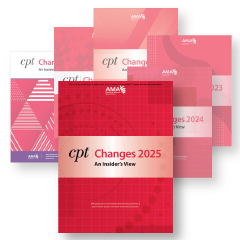by Find-A-Code™
Jan 20th, 2023
No doubt the medical billing industry is changing at breakneck speed. As a medical billing specialist in 2023, you will need to keep up with emerging trends if you want to stay in the game. What should you be paying attention to in the coming year? Check out these five possibilities:
1. A Greater Emphasis on ICD-11
ICD-11 is the next version of the most popular classification system. It was officially launched in 2022. Rumor has it that ICD-11 will replace ICD-10 as the universal standard for disease classification in 2023. That means healthcare providers will be transitioning to it soon.
In addition to being more comprehensive than its predecessor, ICD-11 also has a number of new categories such as 'digital health' (eHealth), 'cancer survivorship' and 'lifestyle choices'. You will need to learn them.
2. More Advanced Billing Software
More advanced billing software is being developed even now, software that simplifies the billing process and makes it more efficient. Here's what to look for in new billing platforms:
- Automated billing processes
- Better handling of more complex billing scenarios
- Data integration using multiple systems
By combining artificial intelligence (AI) with data standardization, software developers are able to create billing platforms that are far more efficient and accurate. New platforms should make automation a standard part of the billing job.
3. The Introduction of Blockchain
Speaking of more advanced billing software, blockchain is on the horizon. As a technology, blockchain is fairly mature. Yet software developers are now finding ways to leverage it outside the cryptocurrency space. It works extremely well for medical coding and billing.
Blockchain is little more than a decentralized ledger capable of keeping track of all sorts of transactions. From a data standpoint, there's very little difference between a series of financial records and the electronic health records (EHRs) produced by medical providers. An EHR can be encapsulated in a blockchain ledger quite easily. And because blockchain records are immutable once they are created, you have a more accurate and secure system.
4. SaaS Cloud Billing
Cloud and software as a service (SaaS) are by no means new technologies, either. Both are finally starting to make impressive inroads into the medical billing industry. Hosting billing and coding platforms in the cloud increases efficiency. It gives health systems and their billers and coders access to software from anywhere. It also offers real-time data and snapshot overviews, which administrators appreciate.
Everything from claim submission to remittance and error correction is moving into the cloud. Healthcare systems and third-party billers/coders are taking advantage of cloud-based tools to improve accuracy and reduce the time it takes to prepare and submit bills.
5. A Greater Emphasis on Virtual Care
Finally, both medical coders and billers should see an uptick in virtual care in 2023. The concept of telemedicine is here to stay, and that will be reflected in the EHRs coders and billers depend on to do their jobs.
As previously stated, ICD-11 even includes new codes that account for telemedicine services. Billers and coders should expect to familiarize themselves with said codes in the near future. They will be used more often as patients choose to see their providers virtually rather than in person.
The demand for medical coding and billing is only expected to grow over the next 5 to 10 years. Between greater access to affordable healthcare and a steadily aging population, a growing demand for healthcare services will see to it. Hopefully, the billing and coding trends we see emerging for 2023 will help support that growth in a positive way. Time will ultimately tell the story.


 Quick, Current, Complete - www.findacode.com
Quick, Current, Complete - www.findacode.com